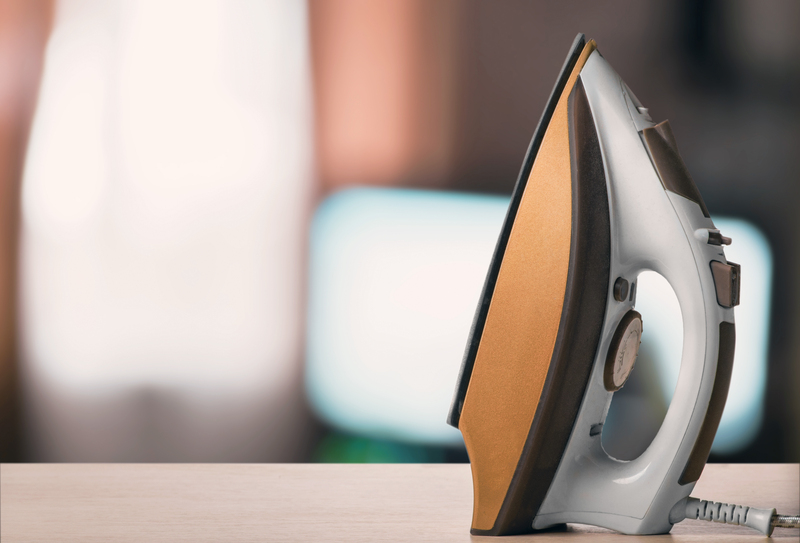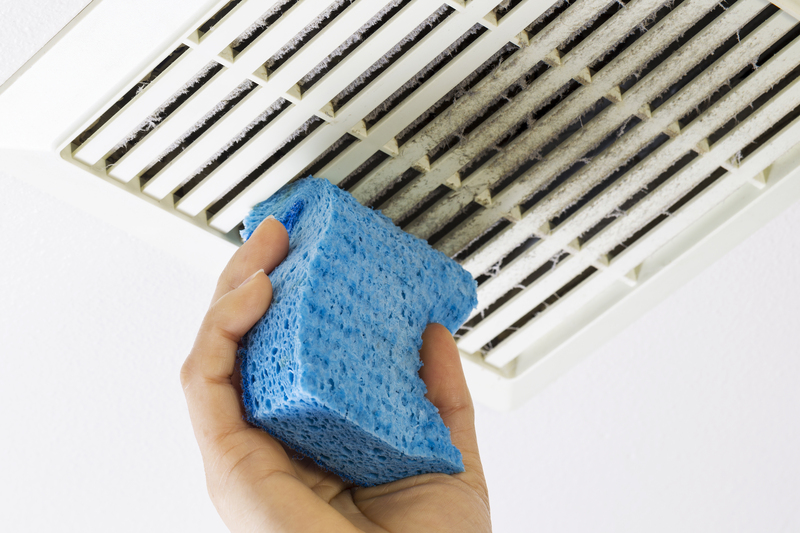Complete Mould Cleaning Guide for Spotless Window Sills
Posted on 29/08/2025
Complete Mould Cleaning Guide for Spotless Window Sills
If you've noticed black, green, or white patches creeping along your window sills, it's time to address a common household menace: mould. Mould isn't just unsightly - it can contribute to poor indoor air quality and trigger allergies or respiratory problems. Our comprehensive guide will take you through everything you need to know about cleaning mould from window sills, preventing its return, and ensuring your home stays fresh, healthy, and visually appealing.
Understanding Mould on Window Sills
Before diving into the practical steps, it's important to understand why and how mould forms on window sills. This background can help you tackle both the symptoms and the root cause, ensuring a truly spotless window sill.
What is Mould and Why Does It Grow?
Mould is a type of fungus that thrives in moist, humid environments. Window sills are particularly prone to mould growth due to condensation, leaks, or high indoor humidity. Common types of mould on window sills include Aspergillus, Penicillium, and Cladosporium.
- Moisture: The most significant factor; frequent condensation, spills, or leaks accelerate mould formation.
- Poor Ventilation: Insufficient airflow lets moisture linger.
- Organic Material: Dust, dirt, or wooden sills provide food for fungi.

Why Is Mould on Window Sills a Problem?
Visible mould on window sills is more than just an eyesore. Consistent exposure can cause or worsen respiratory conditions such as asthma and hay fever. Black mould (Stachybotrys chartarum) is especially notorious for aggravating allergies. It can also gradually damage paint, wood, and the sealants around your windows.
- Health Hazards: Mould spores can cause coughing, headaches, and skin irritation.
- Property Damage: Prolonged exposure leads to paint peeling, wood rot, and soiled sealant.
Complete Guide to Cleaning Mould from Window Sills
Ready to reclaim your spotless window sills? Follow this step-by-step process for effective mould removal.
1. Safety First: Preparation Before Cleaning
Cleaning mould from window sills can release spores into the air, so always take proper precautions:
- Wear gloves, goggles, and a mask to protect skin, eyes, and lungs.
- Open windows for ventilation, or use an exhaust fan if possible.
- Remove curtains or blinds to keep them uncontaminated.
- Seal off the area if the infestation is severe (use plastic sheets and tape).
2. What You'll Need: Tools and Supplies
- Protective gear (mask, gloves, safety glasses)
- Spray bottle
- White vinegar or hydrogen peroxide
- Commercial mould remover (optional)
- Soft bristle brush or old toothbrush
- Non-abrasive sponge
- Microfiber cloths
- Baking soda (optional)
- Warm water
3. How to Clean Mould from Window Sills: Step-by-Step
Step 1: Identify the Type and Severity of Mould
Gently examine the material (paint, wood, PVC) and size of the affected area. If black mould covers more than one square meter, consider hiring a professional.
Step 2: Dry the Area
Use a paper towel to blot up any excess moisture. Reducing humidity is essential for mould removal from window sills.
Step 3: Apply Cleaning Solution
- For light, fresh mould: Mix equal parts water and white vinegar in a spray bottle. Spray directly onto the mouldy area, ensuring full coverage. Let it sit for 1 hour.
- For stubborn or old mould: Hydrogen peroxide (3%) can be applied directly and left for 10 minutes.
- Commercial products: Use as per instructions, ensuring the room is ventilated.
Step 4: Scrub the Surface
With a soft brush or sponge, gently scrub the affected window sill. For wooden sills, use a minimal amount of liquid to prevent water damage. Keep scrubbing until the stains have lifted.
Step 5: Rinse, Wipe, and Dry
- Wipe off residue with a damp microfiber cloth.
- Rinse well to remove cleaning agents.
- Repeat process for stubborn spots.
- Dry thoroughly with a clean, dry cloth.
Step 6: Deodorize and Prevent Recurrence
- Sprinkle a small amount of baking soda on the surface; let it sit for 15 minutes, then vacuum or wipe away. Baking soda absorbs moisture and neutralizes odours.
- Wipe with a solution of water and a few drops of essential oil (eucalyptus or tea tree) for long-lasting freshness.
4. Special Tips by Window Sill Material
- Wooden window sills: Use minimal water. Avoid excessive scrubbing; sand and reseal if damage is severe.
- PVC or UPVC window sills: Safe for most cleaning agents; rinse residue thoroughly to prevent surface dullness.
- Painted surfaces: Test the cleaner on a hidden spot first to avoid discoloration.
How to Keep Window Sills Mould-Free
Once your window sills are mould-free, proactive steps can help maintain their pristine condition.
Preventative Maintenance Tips
- Wipe down sills regularly, especially after rain or when condensation forms.
- Repair leaks around windows and ensure proper caulking.
- Reduce indoor humidity: Use dehumidifiers, especially in problem rooms like kitchens and bathrooms.
- Improve ventilation: Keep trickle vents open and use extractor fans.
- Remove dust and debris, which can provide food for mould spores.
- Keep window coverings clean and free from moisture.
DIY Mould Prevention Solutions
Consider using these natural, non-toxic solutions:
- Spray sills occasionally with a diluted vinegar solution (one part vinegar, three parts water).
- Essential oils like tea tree, eucalyptus, or lavender are naturally antifungal and can be added to cleaning sprays.
- Set moisture absorbers or silica gel near problem areas.
When to Call a Professional
While most small to medium mould problems can be tackled at home, call a professional if:
- The affected area is larger than 1 square meter.
- Mould continues to return quickly after cleaning.
- There is a strong musty smell or visible damage to the wall or sill structure.
- Household members have severe allergic reactions or respiratory issues.

Frequently Asked Questions: Complete Mould Removal for Window Sills
What is the best solution for cleaning mould from window sills?
For most household mould, a solution of white vinegar or hydrogen peroxide is both effective and safe. Avoid using bleach on porous materials, as it may not penetrate deep enough to destroy roots.
Can I use bleach to clean mould?
Bleach can be effective for non-porous surfaces like PVC, but should be avoided on wood or paint as it may cause discoloration. Always rinse thoroughly.
How often should I clean my window sills to prevent mould?
Aim to wipe down sills weekly, or at least monthly in dryer seasons. During rainy or humid months, increase to every few days if condensation is present.
Why does mould keep returning to my window sills?
Persistent mould signals ongoing moisture issues. Check for window leaks, poor ventilation, blocked gutters, or excessive indoor humidity.
Conclusion: Enjoy Spotless, Healthy Window Sills
Taking control of mould on your window sills doesn't have to be overwhelming. With the right techniques and a little knowledge, you can banish this common problem for good. Regular cleaning, prompt repairs, and humidity control are your best allies in keeping window sills spotless and mould-free. Use this complete guide to ensure your home's windows are always a bright, clean, and healthy focal point!





